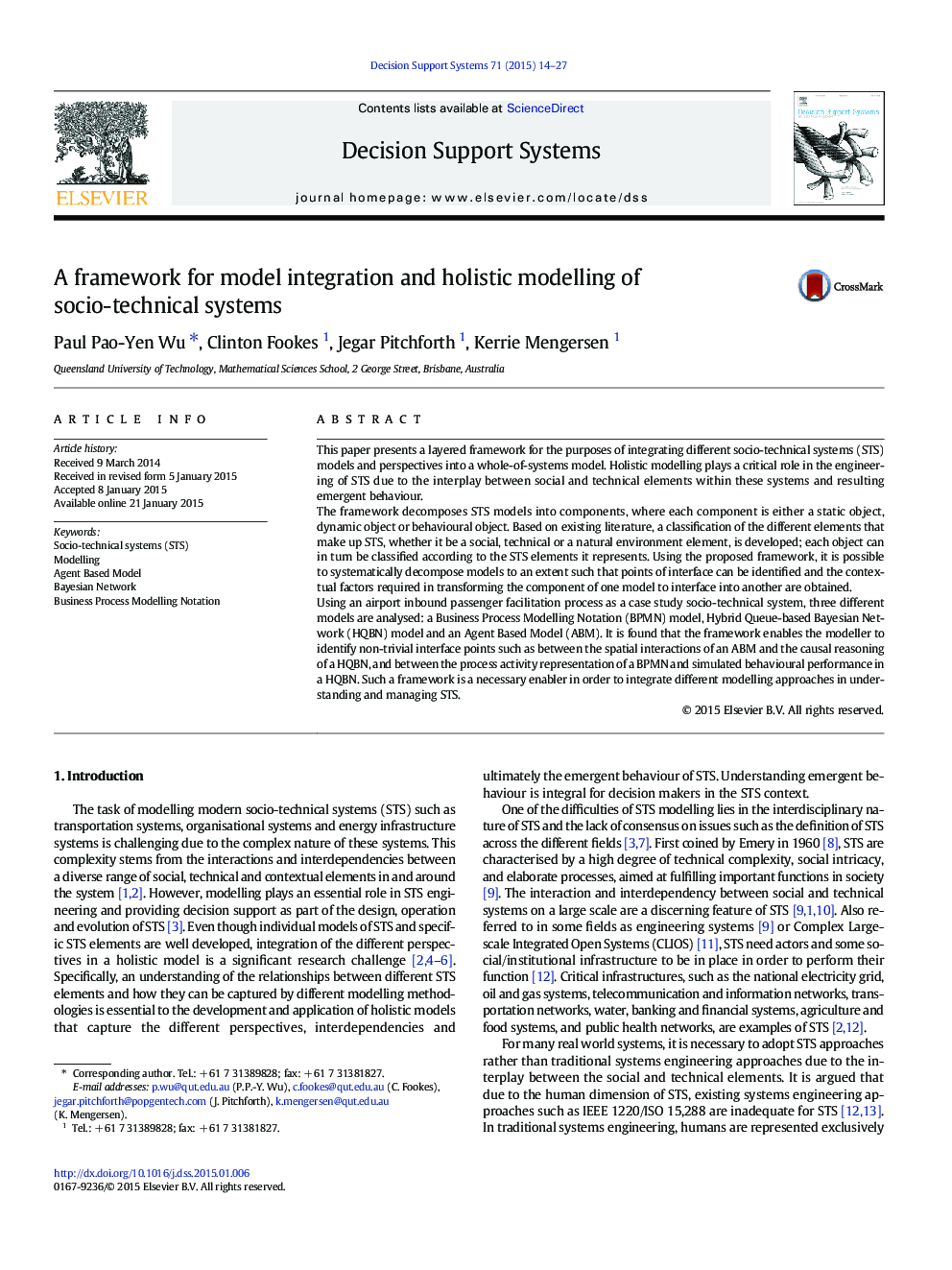| کد مقاله | کد نشریه | سال انتشار | مقاله انگلیسی | نسخه تمام متن |
|---|---|---|---|---|
| 553436 | 1451073 | 2015 | 14 صفحه PDF | دانلود رایگان |
• Modelling plays a critical role in the engineering of socio-technical systems (STS).
• Show a layered framework to integrate discipline-specific models into holistic model
• It decomposes a model into components by context (STS element type) and layer.
• Links between models are then made based on similar/overlapping components.
• We integrate an Agent Based Model, Bayesian Network and Business Process Model.
This paper presents a layered framework for the purposes of integrating different socio-technical systems (STS) models and perspectives into a whole-of-systems model. Holistic modelling plays a critical role in the engineering of STS due to the interplay between social and technical elements within these systems and resulting emergent behaviour.The framework decomposes STS models into components, where each component is either a static object, dynamic object or behavioural object. Based on existing literature, a classification of the different elements that make up STS, whether it be a social, technical or a natural environment element, is developed; each object can in turn be classified according to the STS elements it represents. Using the proposed framework, it is possible to systematically decompose models to an extent such that points of interface can be identified and the contextual factors required in transforming the component of one model to interface into another are obtained.Using an airport inbound passenger facilitation process as a case study socio-technical system, three different models are analysed: a Business Process Modelling Notation (BPMN) model, Hybrid Queue-based Bayesian Network (HQBN) model and an Agent Based Model (ABM). It is found that the framework enables the modeller to identify non-trivial interface points such as between the spatial interactions of an ABM and the causal reasoning of a HQBN, and between the process activity representation of a BPMN and simulated behavioural performance in a HQBN. Such a framework is a necessary enabler in order to integrate different modelling approaches in understanding and managing STS.
Journal: Decision Support Systems - Volume 71, March 2015, Pages 14–27
